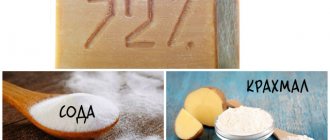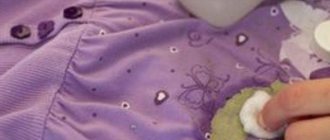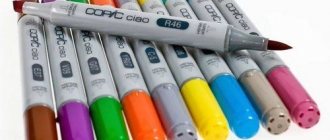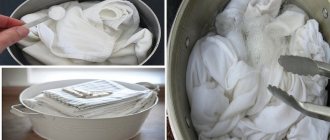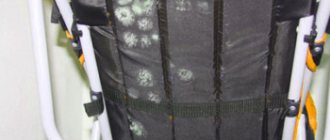Such contaminants include traces left on fabrics by various types of lubricants, which can become dirty at a construction site, in an industrial workshop, or even by carelessly changing a bicycle chain.
Staining substances have different compositions, but the methods for cleaning them are, in principle, similar. It makes no difference what kind of viscous oily composition you got dirty with - released in the form of oil or paste - in this article you will learn how to remove grease from clothes. We will share simple folk recipes and tell you what to do if the means at hand do not help.
How to remove silicone sealant or grease from clothing?
This substance belongs to rubber mixtures.
Silicone has adhesive and adhesive characteristics. The main property of silicone grease is that it can penetrate even microscopic cracks and gaps. That’s why it’s so difficult to wash, because the substance quickly penetrates between the fibers of the fabric. The advantages of the product include:
- The substance instantly hardens, which, meanwhile, complicates the washing process.
- The substance is heat-resistant, which also makes cleaning difficult.
- The substance is moisture-resistant, which does not allow you to simply wash the products in powder.
- Silicone is very elastic.
https://www.youtube.com/watch?v=9YnpSO—tYc'
For all their positive qualities, they make sealants very difficult to wash off.
There are only two varieties of this tool:
- A substance that contains acids. Their distinctive feature is the characteristic smell of vinegar.
- Products that are neutral in their chemical composition.
Silicone grease is a rubber mixture that hardens quickly at room temperature, bonding surfaces securely. Most often, this product is used for sealing plumbing fixtures, tiles, window frames, for furniture restoration and other similar work.
Silicone has many advantages that have made it such a popular product - moisture resistance, resistance to high temperatures, elasticity, and ease of use.
There are several types of sealant and each of them is used for certain surfaces - you can find out about this in the instructions that come with the product. But how to remove silicone glue is another question, it all depends on the type of composition.
The easiest to remove is a universal sealant. Here you can use white spirit. The rest will be much more difficult to deal with, since silicone is a substance that can glue surfaces for decades without losing its properties.
The most important rule when removing sealant stains from leather is that you do not need to use any chemicals, minimizing the risk of harm to the body. The safest way is to use a saline solution. Prepare the solution, dip your hands in it and hold for at least 10 minutes. After this, the composition will soften and can be wiped off with a washcloth.
If there are small scratches on the skin, use soap instead of salt. True, it is not so effective, but it can remove dirt if you repeat the procedure 3-4 times.
None of the suggested methods helped you? You can heat a little vegetable oil, apply it to your hands and leave it for a couple of minutes, then just wash your hands with soap or a small amount of washing powder granules.
As you can see, it is much easier to prevent silicone sealant from getting in than to remove it later. Therefore, try to protect your clothes and skin from stains.
In this case, the most important thing is speed. If the liquid has time to harden and adhere tightly to the surface, it will be very difficult to remove stains. The longer the contact of the sealant with the surface of the material, the more difficult it will be to deal with traces of the sealant - the lubricant penetrates into the pores of the material, which makes them almost one whole. And the better the composition you bought, the more difficult it will be to remove it.
There are two main methods for removing grease marks. Let's look at each of them in more detail.
The main disadvantage of this method is that it is best suited for removing sealant from surfaces that you “don’t mind,” since after completing the work, small scratches may appear on the material. The tools you will need are a knife and a piece of pumice.
The instructions are as follows: scrape off large pieces of hardened product, and polish the remainder using pumice. Naturally, after such an “operation” the tile or any other treated surface will not look very good. An oil stain may also remain on the surface. To eliminate it, treat the area with a simple dish soap.
Other methods of mechanical removal:
We suggest you read: How to remove carbon deposits from a frying pan
- We use salt. Fold gauze or a piece of fabric in half, soaking it in a saline solution in advance, and tie the ends of the fabric to make a “bag”. After this, remove the remains of the dried sealant with a knife, and treat the stain with a bag of salt.
- High temperatures. If the first listed methods do not save the surfaces from contamination, you can heat the material, for example, glass. After this, the remaining product is removed with a clean cloth and detergent. However, it is better not to use this method at home.
This method involves the use of various household chemicals to combat traces of sealant. The first thing to clean silicone sealant from surfaces is white spirit. You will also need a blade and a clean cloth.
The instructions are as follows:
- Apply the product to the stain and leave for about 2 minutes.
- Next, carefully remove the soft pieces of sealant using a blade.
- After removal, a greasy stain will remain on the surface of the material. You can deal with it either with dish soap or with white spirit.
- When finished, wipe the surface with a dry cloth.
Some builders advise using kerosene instead of white spirit - it needs to be rubbed into the solidified product. True, in this case you will spend much more time eliminating the stain.
Silicone Bathroom Sealant
- rapid hardening;
- resistance to high temperatures;
- moisture resistance - for this reason, regular washing with powder is not able to cope with contamination;
- elasticity.
Polyurethane roofing sealant
- construction;
- decoration;
- art;
- metal casting;
- production of furniture fittings;
- archeology and paleontology;
- automotive, aviation, aerospace industries;
- medicine;
- cosmetology.
In everyday life, silicone sealant or lubricant is often used for various purposes. These products are used to seal joints and cracks, fill tile joints, and restore sinks and bathtubs. You need to be very careful when working with silicone. If you handle this substance carelessly, it is easy to stain your clothes.
Mechanical cleaning
Mechanical cleaning is designed to combat fresh dirt, which is recommended to be carried out following the following sequence of actions:
- Stretch the stained fabric. As a result of stretching, the substance will spread out and turn into a thin film.
- Scrape off the silicone with any sharp object (knife, scraper). It should be taken into account that the thicker the film, the easier it comes away from the fabric.
- Wash soiled clothes with detergent. To remove the greasy trace left by silicone from a down jacket or jacket, it is not necessary to completely wash the item. It is enough to simply treat this area with any degreasing agent.
Freezing will help cope with this problem. When exposed to low temperatures, silicone sealant freezes and is easily removed. This method includes the following steps:
- Place soiled clothing in the freezer. It is recommended to first wrap the item in a plastic bag or sack. In this case, the stain must be on top, otherwise the clean areas of the product will become dirty.
- When the silicone is completely frozen, remove the clothing from the freezer. This usually takes no more than 3 hours.
- Scrape off the frozen substance with a knife or scraper.
- Wash the item with detergent in a manner suitable for the fabric from which it is made.
To clean clothes from dried sealant, you can resort to special products (“Penta 840”, “Antisil”). They are sold at any household chemical store. When purchasing, you need to make sure that the product is designed to remove silicone. The remover must be used in strict accordance with the manufacturer's recommendations, otherwise the item may be damaged.
Before using the product, it is recommended to test it on the least visible area of soiled clothing. If 20–30 minutes after applying the remover the color and structure of the fabric have not changed, you can use it without any fear.
| Cleanser | Application | Note |
| 70% acetic acid | Treat the stained area with a cotton pad generously moistened with vinegar. After 30 minutes, remove the softened substance with a dry cloth. Wash the soiled item. If necessary, the procedure can be repeated. When using this method, you need to be prepared for the fact that after contact with vinegar essence, the fabric may lose its color brightness. | It is recommended to perform the procedure in a well-ventilated area wearing rubber gloves, goggles and a respirator. To completely remove the smell of the cleaning product, you need to wash the soiled item several times, using conditioner when rinsing. |
| Alcohol or vodka | Moisten the stained area generously with alcohol-containing liquid. After half an hour, treat the wetted area with a brush. The substance, like mercury, will begin to roll and turn into balls. At the end of the procedure, wash the item with powder. | |
| 98 percent hydrogen peroxide | Moisten the stained area generously with peroxide. After it stops foaming, remove the grease under running warm water. Wash the product. |
We suggest you familiarize yourself with: Erasing cross stitch without damaging the design
Determining the type of lubricant
In its chemical nature, silicone is close to rubber. In order to create a lubricant (as well as a sealant, glue or other silicone mixture), the silicone must be dissolved in a suitable liquid.
There are two types of solvent most commonly used:
- Acid. It is easy to distinguish products on this basis: they emit a characteristic smell of vinegar.
- Neutral. As a rule, such solvents do not have a specific color or odor.
The cleaning method depends on the type of solvent. Therefore, in order to remove the stain as quickly and completely as possible, before starting work you should read the composition of the product on the packaging.
Cleaning methods
When deciding how to remove silicone oil from a down jacket or down jacket, you need to figure out what methods there are to clean things.
- Mechanical cleaning. Only fresh stains can be cleaned mechanically. The fabric is stretched in one layer, and then the thin film of sealant is picked out with a sharp object. Usually such manipulations are quite enough.
- Household chemicals. Stores offer a wide range of household chemicals that will help remove grease from fabric. These are Antisil and Penta 840. Scrub off sealant stains following the instructions for the composition. Before using a chemical for the first time, be sure to do a test to see if it will damage the fabric.
If you can’t remove the stains yourself, you can always take your clothes to the dry cleaner.
Removing stains from clothes
Dry cleaning specialists will help remove silicone stains from a down jacket, jacket, jacket. But such a solution is not always acceptable. In some cases, it is not possible to spend 2-3 days waiting for the item to be returned after cleaning, and you don’t want to spend money.
At home, several methods are used to remove silicone stains from clothes. Each of them has positive and negative sides, so let’s look at them in more detail.
- The mechanical method involves removing pieces of silicone using a sharp knife. The fabric is stretched in one layer, and then, carefully picking up the silicone film, remove it piece by piece. You must act very carefully so as not to damage the fabric.
The mechanical method will only help against fresh stains that have not had time to dry.
- The chemical method is based on the destruction of the dried film using a solvent. The store sells many products that can cope with silicone-based mixtures (for example, Penta 840, Antisil). The product is sprayed onto the stain, the film is allowed to dissolve, and then the remaining dirt is washed off.
Before cleaning clothes with a chemical for the first time, test the strength of the dye by spraying the solvent on the clothes in an inconspicuous place. If the product does not damage the paint, it can be used.
- For old stains, the folk method is recommended. The dried film is steamed with an iron through wet gauze. After this, the softened silicone is much easier to wash off.
Methods and means for removing sealant from clothing
When carrying out repair work, always try to wear things that you don’t mind getting dirty. However, there are still situations when it is necessary to remove a stain from silicone grease before it hardens.
If you see sealant dripped onto the fabric, immediately stretch the material in the area where the contamination appeared.
After this, a thin film forms on the material, which is very easy to remove - just pry it off with a knife or other sharp object.
But most often, dirt is noticed after the product has already dried a little and set on the fabric.
Our next steps in this case are similar to removing chewing gum from clothes - put the stained item in the freezer for several hours so that the product, and along with it the stain, freezes. Next, use a knife to carefully scrape the silicone from the fabric.
If the sealant has already become embedded in the material, soak the product in a vinegar solution. When the fabric is saturated, the composition can be easily removed with a clean cloth. The disadvantage of this method is the remaining smell from vinegar, which can be removed by regular washing. Instead of vinegar, you can use vodka or alcohol - moisten the contaminated area, wait 15 minutes and remove the stain with a brush.
And do not forget about the need to test any product you choose in an inconspicuous area. This will allow you to see how the fabric reacts to the product, which will protect your clothes from damage.
how to remove silicone grease
I was applying aerosol silicone grease to the rubber bands on the car door and accidentally got it on the glass. Now I don’t know how to get this crap off the glass. Gasoline, Profan, and a windshield wiper don’t help, a rag just smears everything... and it’s impossible to drive especially at night because of the silicone film on the glass, the glare is just terrible. Maybe someone knows how to wash this infection off glass. Tell me to appreciate the smart...
Stop by the sink, I also processed it and pretty much overdid it, dirtying everything with small droplets, once I washed myself, and everything was clean! Car shampoo cleans well...
I went far away from Hondurossia!!!
Can I try using a razor to remove marks after tinting?
I make videos, advertising, events +7-996-501-50-36 www.CamRise.ru
Damn silicone you have!) I haven’t had such a problem before... well, I just sprayed polish on the glass - it took so long and tediously with a rag. Can you use a windshield wiper, washer.... go to the car wash..... alcohol? acetone?
Miracles happen where people believe in them, and the more they believe, the more often they happen...
Look for cleaning fluid in auto paint departments. You understand that it is impossible to paint over it; at one time the problem of removal was, of course, solved.
In the heat, the dog hangs its tongue out, and the driver hangs his hand out. If you're lying, be brief (c) Some kind of mafioso
Posted by
nextiDamn silicone you have!) I haven’t had such a problem before... well, I just sprayed polish on the glass - it took so long and tediously with a rag. Can you use a windshield wiper, washer.... go to the car wash..... alcohol? acetone?
Look at the composition and hence the solvent (which decomposes).
If you don’t drink and don’t swear, it means you don’t follow the situation in the country
Posted by
nextiDamn silicone you have!) I haven’t had such a problem before... well, I just sprayed polish on the glass - it took so long and tediously with a rag. Can you use a windshield wiper, washer.... go to the car wash..... alcohol? acetone?
what kind of alcohol is acetone, damn it. just wash the car. and so I noticed that the silicone I have is not Chinese, damn the rubber band was in silicone and swollen one and a half times, I had to dry it, it didn’t fit into the body, that’s what I understand, hellish silicone))) German
I went far away from Hondurossia!!!
Posted by
Andro1970I was applying aerosol silicone grease to the rubber bands on the car door and accidentally got it on the glass. Now I don’t know how to get this crap off the glass. Gasoline, Profan, and a windshield wiper don’t help, a rag just smears everything... and it’s impossible to drive especially at night because of the silicone film on the glass, the glare is just terrible. Maybe someone knows how to wash this infection off glass. Tell me to appreciate the smart...
why did you spray it on the rubber bands??? Usually you pour it on a rag and rub the rubber bands...
Go to the car wash and tell me what you splashed on and where. They will wash it off.
I thought it was a porn thread. And you are all about cars, and about cars.
Mazda Premacy, 2003, 2L, FS, FWD.
acetone washes off anything, just be careful with paint.
Screw acetone. just take Mr. Muscle. There should be ammonia in there. It will clean off.
BTR Motorsport is a company for tuning and preparing SUVs btr.center | vk.com/btrmotorsport | Pavlovsky Trakt, 54B (basement)
aftar, in a pack with cantons kag pravelo solfetge lie so that you can wipe it off
Busy Electrical installation. 252-666
Posted by
Vasiockacetone washes off anything, just be careful with paint.
yopt….on paint with acetone? Is this for sure))))))))))? The topic talked about glass - you can use acetone on glass. and in terms of paint - God be with you.....
Miracles happen where people believe in them, and the more they believe, the more often they happen...
like, I wanted to say, don’t rub the paint!!!)))) be careful, you didn’t get it, although two-component paint and varnish won’t do any good if you don’t rub, but the one that comes off the spray can is washed off with a bang.
It's better with lube! do not delete
Message from
NoSignalwhat kind of alcohol is acetone, damn it. just wash the car. and so I noticed that the silicone I have is not Chinese, damn the rubber band was in silicone and swollen one and a half times, I had to dry it, it didn’t fit into the body, that’s what I understand, hellish silicone))) German
Well, this is what they spray on tits to make them swell
https://diplom22.ru Diplomas, coursework, tests, abstracts __ Truth is born in flooding
Message from
NoSignalwhat kind of alcohol is acetone, damn it. just wash the car. and so I noticed that the silicone I have is not Chinese, damn the rubber band was in silicone and swollen one and a half times, I had to dry it, it didn’t fit into the body, that’s what I understand, hellish silicone))) German
The condom swelled by one and a half times and the device did not fit into the body? :)))
Message from
Andryukh@ 013
It's better with lube! do not delete
The maximum speed is higher due to reduced air resistance :)))
I remember that silicone doesn’t care about anything in the world, solvents or detergents, it doesn’t dissolve in anything and doesn’t bind to anything... But a simple wash helps, although it may not be the first time. Mechanically, the lubricant comes off the coating and is washed away along with other dirt.
With. Mariarayka of the Porno-Altai Republic of the country of frightened idiots
Nail polish remover rocks. It's called a weasel. It costs 28 rupees in the store.
Traditional methods
If you don’t want to use aggressive chemicals or are afraid of scratching the fabric with a knife when removing the sealant, you can try using traditional methods to remove machine grease from clothes. This way you can even remove graphite grease.
The simplest option is alcohol-containing liquids. This could be ethyl alcohol or medical alcohol, vodka or even cologne. A napkin made of natural fabric that does not fade is soaked in the product. Then it is applied to the stain so that it is well saturated with alcohol. Granules will form at the site of contamination and will need to be removed.
If the stain is already old and has long dried out, then you can remove it like this: cover the stain with damp gauze and iron it with a hot iron. The silicone will soften and can be easily removed with dishwashing detergent or scratched with a knife.
Vinegar essence is another proven remedy that can remove silicone grease. The dirt should be poured generously with 70% essence and left for half an hour. After this treatment, the silicone can be easily removed from the fabric with a napkin. This cleaning should be carried out only with gloves and a mask, so as not to harm yourself with harmful fumes. This method is especially effective for removing sealant. Which contains acids.
Any solvent will also help remove the grease. You can take white spirit, highly purified household gasoline, acetone, or even nail polish remover with acetone. A cotton pad is soaked in the liquid, then the lubricant is wiped off with it. All that remains is to wash the clothes.
Every motorist has a special means for cleaning the brake system. It must be sprayed onto the stain. This way you can remove even very old stains.
We suggest you read: How to remove primer from tiles on the floor at home: methods
You can wash off the grease with regular baby soap. Of course, you won’t be able to remove the stain the first time, but if you lather it thickly and leave the item for several hours, the stain will soften and then be easily removed. The procedure must be repeated until the fabric is clean.
Silicone grease does not lag well
In some cases, the sealant cannot be removed as a whole strip. The reason for this may be the wrong choice of silicone softening agent or poor quality sealant. In this case, the treatment is repeated by wiping the surface with a cloth or sponge soaked in solvent. It is worth repeating the procedure until the grease begins to curl, after which remove the pellets with a dry cloth.
It will not be an easy task for those who need to remove the old layer of sealant from porous, non-enameled tiles. In this case, the adhesion of the substance and the tile is much stronger. Therefore, in order to wipe off the lubricant, in addition to solvent and a sponge, you will have to use a pumice stone or a scraper to wipe off the softened seal.
How to remove traces of sealant from an acrylic bathtub?
If, while sealing cracks, a few drops of the product fall on the surface of the acrylic bath, solvents and other aggressive substances cannot be used, as this can “kill” the coating.
You must choose from the following options:
- White Spirit. The main thing is to act as carefully as possible, since it is one thing to wash an acrylic bathtub from greasy stains, and another thing to restore acrylic.
- Dow Corning OS-2 is a special product that allows you to soften the hardened compound, after which you can easily remove it with a clean cloth. In this case, the acrylic structure will not be damaged.
We told you how you can remove silicone sealant from clothes, the skin of your hands and other surfaces. But do not forget that it is better to prevent their occurrence, and therefore cover all treated surfaces with film or cloth.
An effective product that will help get rid of sealant
Construction hypermarkets sell a special liquid. The variety of types of products is quite wide, so the question arises: how to wash off silicone grease from metal and how not to damage the surface? Which type of remover will be most effective?
First, find out what type of silicone grease was used for the seal. They come in one- and two-component types. The latter are often used in industrial conditions, so it would be appropriate to consider household one-component sealants.
Based on the type of vulcanizing agent, they are divided into neutral and acidic. Neutrals include:
- amine;
- amide;
- oxide;
- alcohol
To safely soften acidic silicone on a stainless metal surface, use concentrated vinegar (70% essence). Medical alcohol is suitable for dissolving alcohol sealant, and acetone, white alcohol or gasoline for remaining neutral silicones.
From purchased special products, you can choose Antisil or Penta-840, which are suitable for cleaning the surface regardless of the type of vulcanizing agent used to produce silicone grease.
How to remove silicone grease? It is better to purchase a special product to be sure that the surface will not deteriorate during cleaning.
Outerwear
Removing stains from outerwear is complicated by the fact that the fabric simply cannot be laid out in one layer and the stain treated. The first thing to do if you have stained a jacket or down jacket is to wash the item in the washing machine at least twice with high-quality powder. Use a dryer between washes. You can add oxygen bleach or stain remover to the machine when washing.
Next, the jacket needs to be treated with a special silicone remover. You can find such a drug in hardware or construction stores. Grease stains from thin fabric are very difficult to remove due to the thinness of the material. Therefore, aggressive chemicals cannot be used. To remove grease stains from outerwear, it is better to use vinegar and special sponges that will not damage the fabric.
Why is silicone grease difficult to clean?
Very often, disadvantages become advantages shown “at the wrong time, in the wrong place.” Stains from silicone-based lubricants are difficult to clean for the same reasons why these substances are so popular in technology and everyday life.
Here are the most important properties of silicone lubricants that interfere with stain removal:
Don’t start removing stains without understanding all the details! Inept actions can easily damage the surface and ruin the item being cleaned.
To understand how to deal with silicone grease, you first need to understand what it is. Having understood the structure, it is easy to select a suitable solvent.
Useful tips
Aggressive substances are usually used to remove silicone grease. In order not to completely ruin the item, you must first test the chosen product. To do this, apply the selected product with a cotton swab to an inconspicuous area on the product. This can be an inner seam or a place under the collar, on the back of the cuff. If there is no reaction after an hour and the cleanser does not damage the fabric, it can also be used to clean the front side of the garment.
When removing a stain with a cotton swab, it is necessary to direct movements from the edges of the stain to its center. This is especially important if solvents are used for cleaning. If you rub the dirt in different directions, you can spread the stain over an even larger area.
After cleaning the product with aggressive substances, you must wash it, rinse it twice in a large amount of water, or set the automatic machine to a mode with additional rinsing. This is necessary to ensure that all harmful substances are removed from the fabric. After treatment, it is advisable to dry clothes in the fresh air.
As you can see, there are several reliable ways to remove silicone grease from clothing or fabric items. Don’t be upset if your husband once again comes in with soiled clothes - you can save them even at home with your own hands, using simple and affordable means.
It doesn’t matter if yellow stains appear on your down winter jacket after an unsuccessful wash. It happens that you have to wash vomit stains from upholstered furniture or clothes, and it is very difficult to clean a mattress from red stains and the smell of urine, but there are methods. You can, Removing stains is always a long and labor-intensive process, especially if it concerns traces of food or
How to remove silicone grease from furniture
The choice of processing method depends on the material from which the furniture is made:
- Silicone is the easiest to remove from plastic furniture. Large pieces must be cleaned with a spatula, then treated with acetone or refined gasoline to remove traces of fat.
- It's more difficult with wooden furniture. Solvents are not suitable, as there is a risk of damaging the surface, especially if it is varnished. Take a wooden scraper and carefully scrape off the rubber mixture. This method requires time and patience.
- In addition to a wooden scraper, you can also use a plastic one. Or a regular bank or discount card. Just try to scrape off traces of silicone grease with it.
How to Remove Mold from Silicone Caulk
Basic steps for removing mold from silicone sealant
- Rub a paste of white vinegar and baking soda into the moldy areas.
- Scrub tough stains with a stiff-bristled brush or reapply the paste.
- Rinse with a cold damp sponge and dry with a microfiber cloth.
- Spray any mold on the bathroom caulk with bleach and water to kill mold spores.
- Ventilate and clean your bathroom regularly to prevent mold growth.
Bathroom caulk can be a magnet for mold, especially if left on for a short period of time. Luckily, learning how to remove mold from bathroom caulk actually isn't that difficult—our step-by-step guide will walk you through it and even offer tips on how to prevent it from coming back. And, if your mold problem isn't limited to caulk, you can try our tips on how to use mold removers in your bathroom and kitchen.
How to Get Rid of Mold in Silicone Shower and Bathroom Caulk
Have you noticed black mold on the tub caulk in your bathroom? Learn how to remove mold from bathtub and shower caulk in just 10 easy steps.
To get started you will need the following items:
- White vinegar
- Baking soda
- Damp cloth
- Stiff bristle brush
- Wet sponge
- Cold water
- Bleach
Then follow these steps:
- Create a paste with 1 cup white vinegar and 2-3 teaspoons baking soda.
- Use a damp cloth to remove a small amount of paste.
- Apply the paste to the sealant. Make sure the mold is well coated with a thick layer.
- Leave the paste for 5 minutes.
- Use a stiff bristle brush to remove the paste from the caulk.
- Use a clean, damp sponge to “rinse” the sealant. Make sure you use cool water.
- If stains remain, repeat steps 4-6 until the mold is gone.
- Remove any remaining mold spores using bleach and water. Apply a solution of 1 part bleach to 4 parts water generously to the caulk and let it evaporate.
- Wash the affected area again with a sponge and cool water.
- Dry with a clean microfiber cloth or towel.
Now you know how to remove mold from shower caulk and silicone, it's time to stop it from coming back:
- Wash bath towels, shower curtains and bathroom fixtures regularly to prevent mold from growing. Loves wet conditions.
- Use a dehumidifier or open a window to remove any remaining moisture from the air after showering.
- Invest in removing moisture from indoor plants. Read our article on indoor air purifying plants to learn more.
- Don't forget about cleaning the bathroom. Check out our guide on how to clean your bathroom grout and make it part of your cleaning routine.
So, in just ten simple steps, you now know how to remove mold from silicone caulk! Plus, this guide uses everyday items from your home, which also makes it budget-friendly.
.
